Myths and stereotypes that are misleading buyers of ceramic tiles. Quality criteria, manufacturers, backstage, design and price.
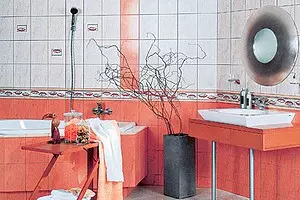
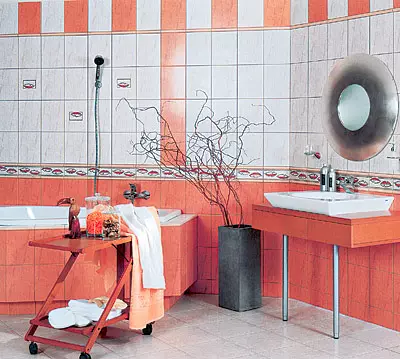
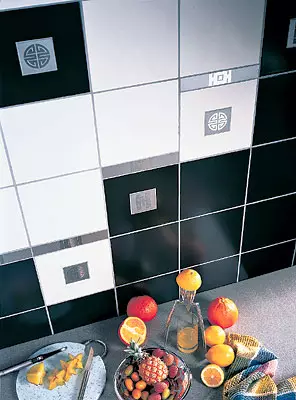
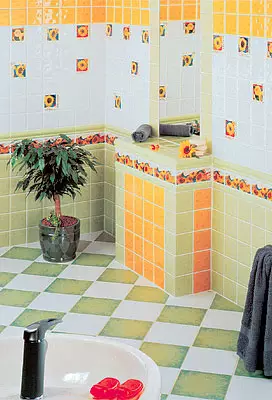
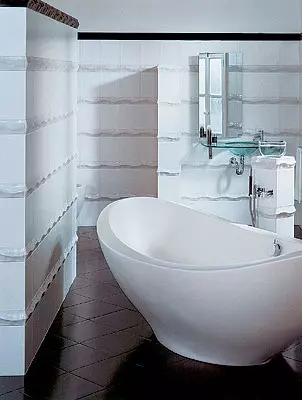
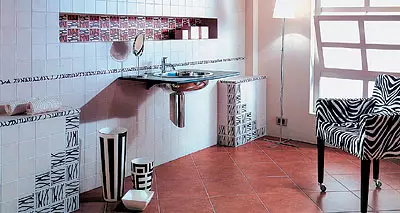
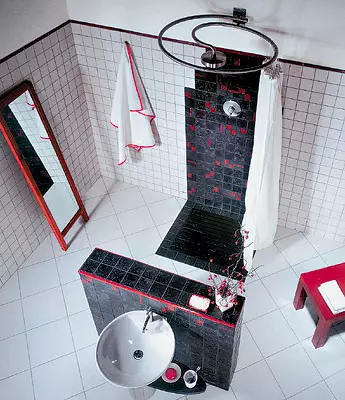
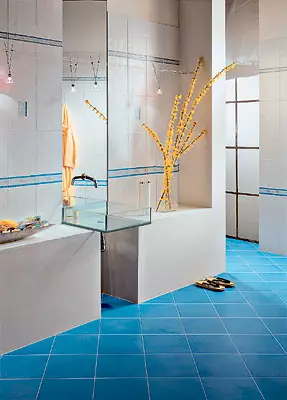
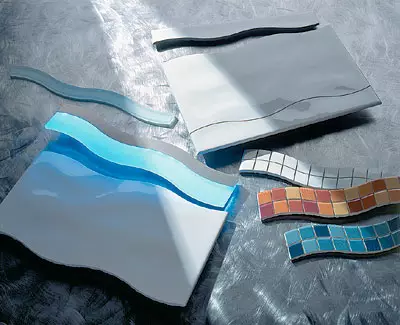
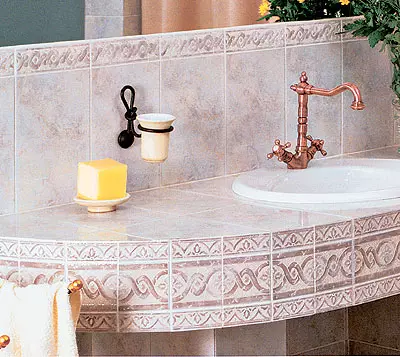
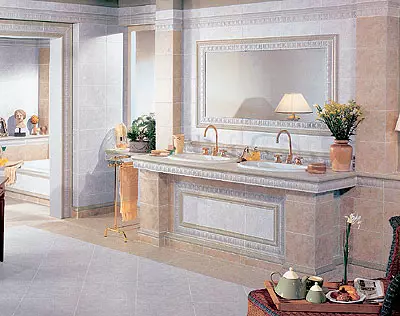
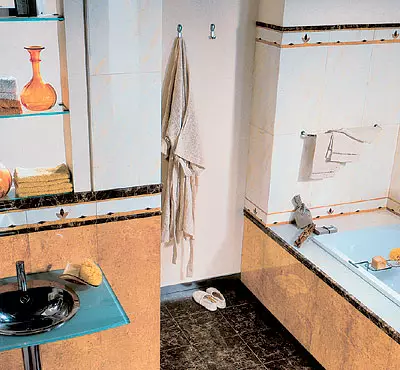
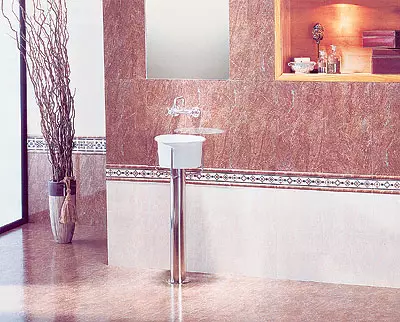
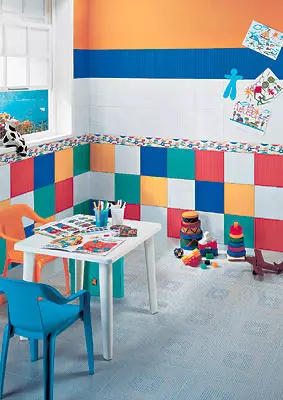
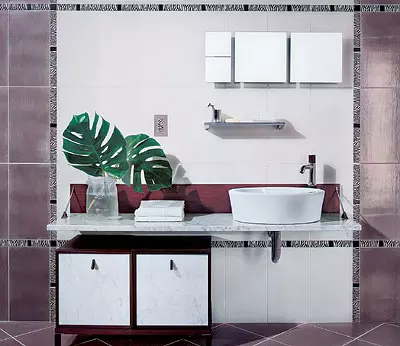
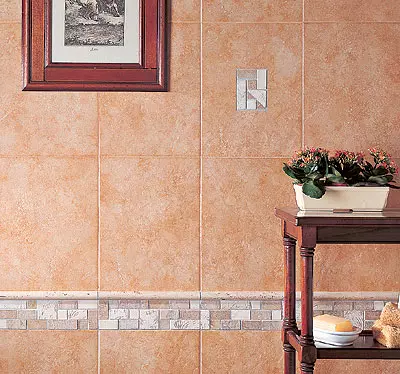
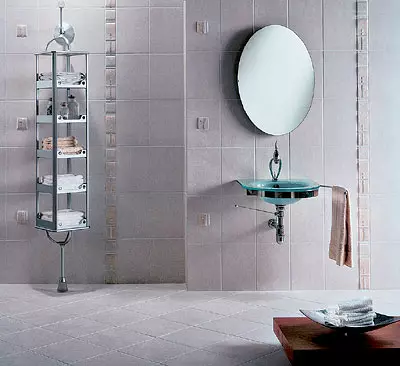
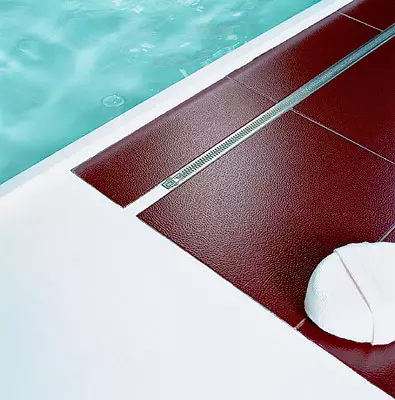
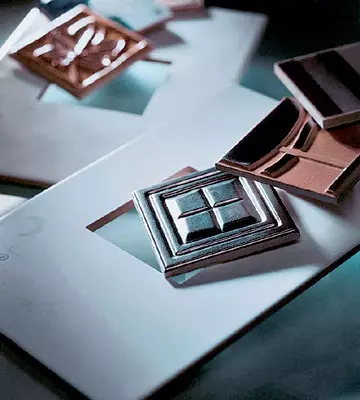
We will talk about the latest history of the oldest cladding material, ceramic tiles. We will tell about manufacturers, criteria of quality, fortification, design and price. I doominate several myths or, if you like, stereotypes that do not give rest to customers and sellers
Tale of the market
The Russian ceramic tile market began to consistently form in 1996-1997. Then buyers could classify tiles only as domestic, Italian, Spanish or Czech, without going into details of design, quality and prices. Sellers were enough to bring products in neat packaging with the Made in Italy stamp, and the success of sales was provided. Today, another thing: the buyer comes competent and folding.According to the 2002 Customs Statistics and the State Statistics Combine, the share of domestic plants in the Russian facing tile market - 66%, Belarusian OJSC "Keramine" - 14%, and the remaining 20% divide colleagues from far abroad. Place the latter in descending order: 29.2% of imports comes from Spain, 25.4% from Italy, 13.7% from Poland. China, Slovakia, Turkey accounts for 5% and, finally, on Lithuania, Germany and the Czech, less than2%. Countries such as France, Great Britain, Iran, etc., do not cross the one-surrender border, so they are united: all together, 5.5% of the share of imports.
Italy, fashion legislator for tiles last 100 years, equipped with equipment 95% of all global manufacturers of this product. More than 350 fabric and dozens of designer workshops work on the whole world in the area called Modena. Every year in early October, they compete at the largest Italian international exhibition Cersaie in Bologna. New items fall on the counters of Russian salons and shops by February-April next year. As in the field of finished clothes, you will not remember the jacket purchased on the sale, but do not forget the promoted brands Versace, Piere Cardin, Killer Loop, and the buyer tile rarely distinguishes the names of numerous Italian factories, but holy honors Favorites: Cooperativa Ceramica Di Imola, Marazzi, Atlas Concorde, Iris, Impronta, Ariana, Mariner, Fab, Gardenia Orchidea, Bardelli, Tagina, Ascot, Sant'Agostino, Magica, Marca Corona, Cedir, Ricchetti, Campani, etc.
Spain - the world in the world in terms of volume manufacturer of tile - started following Italy 50-60 years ago and successfully catches it on Italian technologies and equipment. Everything is very similar: the 350 fabric located in the Castellon terrain present their achievements in the Spanish International Exhibition Cevisama, held in Valencia at the end of February and early March. Loss of facing tiles supply several dozen factories. Among them, Aparici, Vives, Metropol, Diago, Tau, Venus, Peronda, Navarti, etc.
The domestic manufacturer felt well since the default of 1998, when he went to the separation from importers. But in the last two years, following the change in the addiction of buyers, he had to modernize the production, to establish imported (rhin italian) equipment, use Italian dyes, snap, grid and even attract Italian technologists. For example, we give the "Sokol" (Kdenovsk, Moscow region), "Velor" (brand "Kerama", Oryol region), an experimental ceramic plant in the undergrowth and "Lira Ceramics" (Moscow region). Moreover, three Italian lines have been launched at OJSC "Stroyfarfor" (G. Shechta, Rostov region) from 2001. Three Italian lines have been launched. Recently LLC "Bashkerama" (the equanka of the Oktyabrskaya Ceramic Tile plant) and OJSC "Nezrit-Ceramics" (Nabase of Tiled Production No. 4 of the Leningrad Plant of Ceramic Products) concluded contracts for supplying lines for the production of facing tiles. "Keep it, comrades !!!" However, it is not necessary to underestimate the importers who have reached the predefate supply volume in 2002.
The main competitor in the niche of the products of the updated Russian enterprises is tile from Eastern Europe, Poland and the Czech Republic. Poles five years ago successfully passed the stage of modernization of production and now actively sell tiles in our market at retail prices below the central European ($ 10-15 for 1m2 background tiles). Unas are famous for five Polish factories: Opoczno and Tubadzin, followed by Ceramika-Konskie, Paradyz and Polcolorit.
The main obstacles to the Wide distribution in Russia in Russia (Villeroyboch, Hoba Steel, Steuleroyboch, etc.) and English tiles (Johnson) are a high retail price (about $ 35 for 1m2) and stereotypes of suppliers and buyers. The French tile in the face of the Cerabati factory, which is part of the Gruppo Marazzi (Sennaya Turnover in 2002, 760mlnere), began its procession in Russia only in 2002 and positions itself in the retail price niche $ 20-25 for 1m2. Despite the good quality, a decent design, impressive volumes of production and the popularity of Turkish tiles in Germany, due to the biased attitude of Russian buyers to Turkish goods, this product has not been widespread from us. In the east of Russia, the Chinese tile has emerged long ago, now it gradually penetrates the west. This product is characterized by high quality (technologists), low retail price (even at high transport costs it costs about $ 10 per 1m2 "background") and a variety of interesting collections design. It is not yet available to the Veserine part of it, but there is a tendency to increase deliveries due to fashion for all Eastern.
Tale about quality
First, ceramic facing tiles for inner walls cannot be compared with the floor tile and the more porcelain. According to European ENISO and GOST 27180-2001 standards "Ceramic tile. Test methods", it is highlighted in a special class, in addition, quite recently, Russian GOST was aligned with European standards. According to the requirements of the GOST and EN ceramic facing tile for walls, tests for the accuracy of geometric parameters, water absorption and stability of glaze to scratch, but is not tested for wear and frost resistance (accommodation from outdoor and street "fellow").
Requirements EN ISO to the technical characteristics of ceramic facing tiles
| Technical specifications | Standard CEN and GOST | Permissible deviations |
|---|---|---|
| Length and width | EN98. | Maximum0.8% |
| Thickness | EN 98. | Maximum 8% |
| Straightness | EN 98. | Maximum 0.8% |
| Area | EN 98. | Maximum 0.6%(GOST does not define) |
| Water absorption | EN 99. | Less than 16% (less than24% for carbonate mass and polymineral clay) |
| Flexural strength | EN 100. | More 15MPa |
| Resistance to abrasion | EN 101. | More 6Balls on the Moos scale |
Checking the quality of facing ceramic tiles is carried out on the basis of a number of parameters. Deviations in length and width not exceeding 0.5% correspond to the top-class tile. The thorns refers to the deviation of the angles from the direct no more than 0.3%. Linear dimensions are responsible for the accuracy of masonry, straightness and uniformity of the thickness of intercutric seams. The flatness of the surface covered with tiles is largely due to the quality of each individual element. Products with even insignificant convexity of the median part or edges form a non-uniformly glossing plane. In addition to linear indicators, its physico-chemical stability plays an important role in assessing the quality of the tile. Over time, the material may be deformed, which indicates its low quality. Another unwanted property ceramics is the ability to absorb water. The most often tile is used in wet rooms, and the one that is quite actively absorbed by moisture, can change its linear dimensions, destroy the binding material, and then fall out. The standard requires that the increase in the dimensions of the test sample during the saturation of moisture did not exceed 0.1%. In addition, the tile is checked for thermal exposure and resistance to aggressive liquids, such as hydrochloric acid, potassium alkali, household chemicals.
The layer of glaze on the tile is checked for resistance to scratches of rods from minerals, the hardness of which is known. Quality is determined according to the MOOS scale (it includes 10 skill-ottilka to diamond). The minimum requirements for the surface stability of the glazed tile - MOHS6, which corresponds to a fieldspap.
Secondly, the myth that the second and third grade is carried to us from abroad, completely deprived of the grounds. Products are determined by the aesthetic and functional criteria. According to aesthetic criteria, in accordance with the EN98 standard, the surface of the tile should look solid. For the first grade, the presence of 5% of tiles with defects in the party is permissible. According to the functional criteria, the arutility accuracy, resistance to chemical exposure, abrasion, etc., - the parameters specified in the standard on this tile must be within the table below. The second grade allows small deviations of the functional parameters of the tile from the permissible values in the fourth part of the batch. Under the third grade, they understand the entire tile, which has not entered the first and second grade.
Each manufacturer itself determines the types of its products. Large suppliers do not face the concept of quantity, because in price lists of the factories indicates the products of only the first grade. In addition to this product, the second grade comes out, as a rule, no more than 10%. It is impossible to predict the types of parties in advance, since the marriage is random. Therefore, plants cannot guarantee the continuous presence of a second-grade tile, which will never arrange a serious supplier. The second grade is on the construction of large objects, government agencies, train stations where the contractor takes on facing problems associated with scattering dimensions. Sometimes small second-grade batches still fall into small firms that are traded by small volumes. However, the selling price of the plant on a tile of a second grade is not so large compared to the difficulties that may occur during the implementation of this product. Vitoga The retail value of the products of the second grade is lower than the cost of the first total by 5-10%. Marking, packaging and the appearance of the tile of the second variety differ from the same parameters of the primitive tile, and the specialist will always determine the types. However, is there a similar specialist among your friends, who will deprive the unfair seller and will restore justice? ..
Thirdly, in Europe has long been solved the problem of tile quality as such. Having financial resources, just buy a Italian line and consumables, hire a technologist. The problem of quality is solved gradually, as the equipment is faced with the first wave equipment purchased in the GDR (these are presses and glazing lines). As mentioned above, it replaces a new one (although it is possible, and not quite new - there is a secondary market) Italian equipment. Key points in the production of tiles in the presence of a modern line are accurate compliance with technology at all stages and quality control system. Therefore, in the production of a ceramic plant, which employs Italian technologists and where the control system is certified according to international standards ISO9001 or ISO9002, you can not doubt. But all this is expensive, and while there is not a single enterprise in Russia, although there are some teams of technologists from Italy today (for Primemmer, we call the factory "Lira Ceramics", "Velor"). Let's hope that in the near future a decent substitution will be Russian "specialists", which have passed a solid internship abroad.
Tale of design
The technical parameters of the tile are standardized and determine only half of its cost. The second half is the quality of the design - the parameter is subjective. However, it is he who forms the success of sales of a collection (series), because as a result, the tile is selected based on individual addictions. This product is being bought and bought this product with collections (series), which determine the interior of the lined room (neo-free Sanfeayans). The longing of each collection includes a background tile covering 80% of the walls of the walls, and decorative elements. Inside, all kinds of fine art are combined: graphics, painting, sculpture, applied crafts.
There are classic and modern collections of ceramic tiles for indoor walls.
Historical classic. The classic collection is formed by all manufacturers equally. This is usually two tons of background tiles with streaks (imitation of a certain stone). Note that a darker tone, as a rule, is located on the bottom of the wall, more light above. Plus, decorated inserts in the form of tiles with a pattern, separating the border with ornament and various thin strips, friezes, plinths. The design is based on the national characteristics of the art manufacturer.
In the Italian collections in one form or another there is an antiquity theme (rustic effects, marble surfaces, bulk floral ornament of the curb). Color colors and elegant color. Whitalians in Russia dominate beige, brownish, light terracotta, light blue tone. Moreover, the classic is in the assortment of almost all Italian manufacturers. The most wide selection is offered by Ariana, Marazzi, Tagina, Marca Corona, Iris, Gardenia Orshidea, etc. Your bathroom will turn into an antique temple if you acquire collections with Tagina handmade décor, or in a thinker, if you prefer a tile from the Filosofi series from Gardenia ORSHIDEA. However, this will require serious investments - from $ 1,000 to $ 5,000 for lining of the bathroom size 20m2. Less meticulous interpretations are proposed in the Domus collection from Ariana ($ 22 for 1m2 "Background"). Here the tile does not mimic the natural stone, and its cost allows you to save money on plumbing. In general, the choice of classic collections is very wide (postpoint and appearance). The same, the legendary Italian classic is the most running goods, so it makes everything not too lazy, including in Spain, Poland and Russia.
Spaniards have more shiny tiles using bright dyes, gold, metallization. Figure Border, saturation of the background tiles of MAYANAVAS collections from Aparici ($ 24), Jazz and Enea from Diago ($ 20), Colonial from VIVES ($ 20) carry us at the time of colonial conquest. The medieval ornament is dominated in the Tau Factory Paloma series, and the Mediterranean motifs will be read in the Toscana collection from Peronda. In a word, in the manifold of the decor of the tile, you can trace the entire evolution of Spanish classical art.
In the Menthon Hollins series from Johnson (United Kingdom) implemented a Victorian style. The British will not be stored on saturated paints and elegant design. There are in our market and tiles with ancient Russian decor. For example, based on Russian temple architecture created a collection "Golden Ring" of the brand "Kerama". Here are patterns that the walls of the colors of the XVI-XVII centuries decorated.
In the traditional historical classics worth more than $ 15 for 1m2 background tiles dominate the imitation of the textures of natural materials, mainly stone. Moreover, many "advanced" factories offer collections deliberately shcherbat tiles with uneven edges and chamfer made so that when the seam rubbing the seam is maximally uneven. At the same time, the rough side is ideal in quality, the effect is created only due to the visible part. This naturalism under the ancient on the manufacturer's recommendation is intensified with thick seams (up to 100cm) and uneven masonry. Which is more inhomogeneous, curvilinear and a tile, the closer it is to the original (stone), the more expensive. The same with collections, as close as possible, to polished mramor with its beautiful drawing of residences (as in Imarmidi from Impronta, Spain). It costs 1m2 of such a material about $ 35.
Modern collections. Their appearance is completely subordinated to the designer's thought, and there are no limits for fantasy. A variety of decors is comparable, except with the number of paintings in the Tretyakov Gallery or Hermitage. In addition, modern technologies allow you to get pictures of photographic quality.
Neoclassic is built on the same canons that historical classics: the same background tile, the same borders. But a general species is characterized dramatically, as the painting of the latexix-beginning of the XXVEK from the ancient frescoes. The floral ornament is transformed into schematic images of colors (Mirado from Cerabati, France ($ 22); Moderno from "Lira Ceramics" ($ 10), "Rainbow" from "Falcon" ($ 10), "Eldorado" from "Carama" ($ 10), all - Russia). The stingy medieval decor turns into geometric patterns, rather resembling sinusoids, histograms (Matisse from Tau- $ 20), colored rectangles (Riflessi Sul Mare from FAP- $ 35 per 1m2). When designing such a tile, absolutely all picturesque techniques are used, often supplemented with sophisticated surface texture. It can imitate a light ripple on the water (Graghic from Atlas Concorde- $ 29), to be rough (Habana from Aparici- $ 21) or smooth to the touch, similar to the bark of a tree (Kora from Tubadzin- $ 15) or "Pupadzin" (SITY-KUBIK from Peronda- $ 22).
High Tech style demonstrates a minimalist and postmodern approach to tile design, which is expressed in pure background tones and abstract, laconic, often a monochrome ornament. Modest "Nordic" flowers and grass screaming on a tile Lilly German designers from Steuler. In many collections, a vertical border appears, capable of visually increase the height of the room (for example, in the GRIFFE PERGAMO collection from Sant'Agostino- $ 35 per 1m2). Metallization is widely used. More often than in neoclassic, various surface textures are attached. Note that in the absence of bright color ornaments, the texture and volume play a very significant role (Bravo from VIVES- $ 22, Cuir Tabaco from Diago- $ 22).
The use of multi-format monophonic tiles (MAROCCO from Bardelli) helps to visually increase the space. For the same purpose, you can use the so-called architectural (designer) tile. This is a simple background tile of different colors and sizes (1010, 1515, 2020cm). It allows the interior designer to lay out any enlarged ornament.
Ethnic style is gaining strength with each new exhibition. The African topic looks in a new way in the super-modern context of the IRIS Transparenze collection. The decorative elements of the Katanga series from Steuler ($ 22) are made based on the totem masks and traditional ornaments of African tribes. Simple geometric shapes and clear color contrasts give rise to the feeling of rhythm and the unrestrained energy of wildlife.
The name of the Savanna collection (CERABATI) says for itself. As if the herds of small giraffes, among the decorative tile, leaned against the curb and left a fractional spotted drawing of the skins. Avot under the universal symbol "Yin-Yan" there were contradictory minimalistic interpretations of Japanese and African ethnic groups (Yin-Yang series from Marazzi).
Trends and new products. Today, large formats are becoming popular: 3040, 3060cm. The buyer seems to try to forget that 15-20 years ago, the entire tile had dimensions of 1010 and 1515 cm. Moreover, the proportions strive for the ratio of length to width 3: 1.
In 2001, at the Italian exhibition CERSAIE, some factories announced the collections of pseudo-carriage. It was a ceramic tile of 2020cm with pseudo-models for squares with a side of 1 or 2 cm. To enhance the mosaic imitation, each element was made somewhat different from others in color. In October 2002, almost all firms began to produce pseudomosis as a background or decor. It is explained simply: today the mosaic is very popular, which, of course, could not use the manufacturers of traditional tiles. In addition to flat background tiles, there are and layouts of vertical columns on a flexible substrate so that the curly surfaces can be faced. Punching of full layouts (the so-called color gamut laid out by a real mosaic) we have the Star Light from Tagina- $ 60 (Italy), EGEO from Peronda- $ 22 (Italy), etc. Some manufacturers offer a mosaic decor (for example, the Renova collection from FAP) .
In 2002, in the Soleado series from Impronta (Italy), Perle from Ariana (Spain), Ceramica Bardelli (Italy) and many other factories have a tile, which is properly glorified. Photographic images of colors and even reproductions of paintings are applied to its silk-screening method. Suppose that success will be developed and in 2003 in the collections of all manufacturers will appear photographs of people or reproductions of masterpieces on the tile.
Just a month and a half ago, in January 2003, two collections were presented at the exhibition in Munich, which combined two directions for the development of tile design. The first direction has already been embodied in some collections, these are slots or cuts produced by hydrophic cutting. An example of the embodiment of this method can be a Metropol factory tile (Spain), where there are openings in the background tile, where you can insert various decorative elements. Wings and Flow from Steuler envelopes are non-separated wavy cuts around the edges of the background tile. Withdrawing the edge, you can form a sinusoidal seam, which is significantly different from the traditional rectangular grid. The second direction is implemented in a enchanting luminous border, repeating the contour of the slots in the tile. The backlight is carried out using LEDs embedded in a thickness of a transparent material. Four meters consistently connected border elements are connected to one network voltage adapter.
The Russian industrial design is still in its infancy. If the standard import collection involves a choice of 4-5 color shades, the domestic producers barely master3. The main task of the domestic "Pliteprom" today is the development of a competent design that allows you to raise prices, and after this, achieve the profitability of the production and further development of the industry. The output can be found in trying to raise your designers, as they do in the "chokol", or in attracting Italian professionals, as they enter the "Lira Ceramics" and "Velor" (brand "Kerama"). Ito and the other already brings their fruits, so that the consumer does not have to wait for decades.
Tale of price
First, the presentation of buyers that the cost of lining the bathroom will be obtained as a result of a simple multiplication of the price of the background tile on the walls of the walls, is absolutely incorrect. Akak same cost of decor, without which your bathroom looks like a public toilet? Supporting decoration The price of a square meter will increase at least by 30% in the case of the use of Russian tiles, and twice as used imported. This is explained by the fact that the decorative tile in most cases is worth in 10 times more than the background when calculating 1m2. For example, a decorative element of Russian production of the size of 620cm price of about $ 1.2 when calculating 1M2 will cost $ 96. Ito at the price of "background" $ 8. For foreign collections, you can build such a series of relationships of middle retail prices "background" (1M2) / Bordur (1pc.): $ 11 / 3.5; $ 15/5; $ 20/8; $ 35/13. Of course, the larger the decor area, the lower its value per unit area and above its price.You say that the direct relationship between the price of individual elements and the final cost of delivery is not. Let us give an example: 2m2 background tiles 2020cm worth $ 20 per 1m2 are separated by a curb of five tiles in size 520cm, at the price of $ 8. After carrying out simple calculations, we get a double increase in the cost of delivery as a whole.
Note that special high costs lies in classical and neoclassical collections (sets of borders, decorative inserts).
Secondly, there is a sustainable opinion that the exquisite classical collection produced at a small enterprise is always more expensive than mass collections. Sometimes it is not. Large foreign manufacturers mainly make a "background", and all decorative elements are ordered from suppliers of cooperation, so the price of these components immediately increases. Aschen and minor factories keep the price of a decor high to increase profitability. Therefore, there can be no simple comparison. To optimize the selection, consider the estimate in general. For example, at the low cost "background" at Marazzi factory decor can be more expensive than handmade decor at Tagina.
Pricing structure for imported ceramic tiles
| Component in the price structure | Share,% |
|---|---|
| Study contract price | 100 |
| Customs duty | fifteen |
| Value added tax (to the sum 100 + 15 = 115%) | twenty |
| Fare | 10-15 |
| Total price, taking into account transportation costs and customs payments | 148-153 |
| Wholesale markup | 25-35 |
| Wholesale price | 175-188 |
| Trade surcharge | 10-25 |
| Retail price | 185-213 |
Tale about material
Many sellers, praising their products, mention white clay, double firing, equating these factors to the quality of the products offered. Let's try to clarify what they are wrong.Tile is made from red mass and white mass mainly by pressing. The mass of the mass includes a red or white clay, respectively, quartz sand and aluminosilicates of calcium and magnesium (field spattes) and / or carbonates. By the name of the masses it becomes clear that the main difference should be in the color of the dumped ceramic body tiles. Forward, it turns out reddish-brownish, in second-white or light beige. The main structural parameter of ceramic utility is porosity, which predetermines the mechanical strength and water absorption of the product. The higher the porosity, the greater the water absorption and less strength. The quality of the tile material can be compared by assessing water absorption.
Firing tiles occurs at a temperature of 900-1250c for 40-70 minutes. It is from the temperature and duration of the roasting depends on the porosity of the tile scrap, and not from the initial mass or the number of roasting. In addition, the mass is sintered simultaneously with the icing (as with a single firing) or separately (as at twofold) - it does not matter. This is a matter of application of different technologies to achieve one result. Only the price is growing: more frying is more electricity - more than a tile.
Thus, the tiles for the inner lining of the walls based on red or white mass produced using a single or twofold firing, as a result, no different, except for color and prices, and are included in the same group of BIII to Eniso tolerances. However, white clay (kaolin) is more plastic and allows to obtain a greater accuracy of sizes. In addition, in some cases, when using transparent glazes or unlawed tiles, the color of the base is important. Kaolina deposits are located in France, Great Britain and Germany, so it is there that white clay is more often used to produce ceramic tiles.
Thirdly, the well-minded belief that the Spanish tile is cheaper Italian is due to the fact that most of the Spanish tiles supplied to the Russian market is the products of the mid-level and classical design. In its production, decorative technologies that do not require special costs are used. However, if you compare the design and level of goods, they will have an equal value. In addition, according to the Customs Committee, every year the gap between average contract prices is reduced. According to the results of 2002, it is 3.5%, so it should not talk about a great price difference.
Fourthly, in the construction markets, the tile is not always cheaper than in the store. This is true only for domestic products that can be purchased little and directly. As a rule, minor sellers take imported tiles from much larger direct suppliers, so it is not able to beat the price in the stores of the distributors themselves. In addition, in the market, you can often encounter a situation where you cannot pick up tiles in addition to the missing or broken.
Let's hope that our short story will help you quickly navigate in the ceramic tile market and not to get into the cabins, skillfully placed on the buyer's path.
List of leading Russian manufacturers of ceramic tile
| Factory name | Region | Relative production,% |
|---|---|---|
| CJSC "Velor" | Oryol Region | 17.7 |
| OJSC Volgograd Ceramic Plant | Volgograd region | nine |
| CJSC PKF "Voronezh Ceramic Plant" | Voronezh region | 7.6 |
| OJSC OSCCO Electrometallurgical Combine | Belgorod region | 6.6 |
| Doao "Experimental Ceramic Plant" | Moscow region | 6.8. |
| OJSC "Nephrit-ceramics" | Leningrad region | 6,1 |
| OJSC "Plant of Ceramic Products" | Sverdlovsk region | 6,1 |
| AOOT "Falcon" | Moscow region | 5,7 |
| OJSC "STROYFARFOR" | Rostov region | 6.9 |
| LLC "Kuchinsky Ceramico-Tile Plant" | Moscow region | 4.8. |
| CJSC "Contact" | Leningrad region | 4,2 |
| CJSC "Quartz" | Leningrad region | 2.6 |
| CJSC PSKOVKISOTOUPOR | Pskov region | 2,1 |
| CJSC "Cheboksarskaya Ceramics" | Chuvash Republic | 1,2 |
| CJSC Glebichevsky Ceramic Plant | Leningrad region | 1.5 |
| LLC "Main Production" | Moscow region | 1,6 |
| OJSC for the production of building materials "Nestsovo" | Smolensk region | 1.5 |
| CJSC Piastrla | Sverdlovsk region | 1,7 |
| OJSC "Bunkovsky Plant of Ceramic Products" | Moscow region | 2,3. |
| CJSC "Angarsk Ceramic Plant" | Irkutsk region | 0.9 |
| OSOO "TAZ-Ceramics" | Samara Region | 0.9 |
| October ceramic tile and porcelain factory | Republic of Bashkortostan | 0,6 |
| OJSC TverSteklo | Tver region | 0.8. |
| CJSC "Tomsk Plant of Ceramic Materials and Products" | Tomsk Oblast | 0,3. |
| CJSC "Kirov Stroyfarfor" | Kaluga region | 0.4. |
| Lipetsk Factory | Lipetsk region. | 0 |
| LLC OP "KrasnoyarsktroyMaterial" | Krasnoyarsk region | 0.1. |
| LLC "MAKHALINSKOE" | Penza region | 0.1. |
| OJSC "BEZ" | Moscow region | 0.1. |
| TOTAL | 100 |
Thank you for your help in the preparation of the material of the company "Old Man Hottabych", "Lira Ceramics", "Priegeer Keramik", "Kerama", "Chic", "Fintorg", TD "Giel", "Server". In the preparation of the material, analytical DATA OF THE INSTITUTE OF RESEARCH OF STAGES AND CONNECTURE OF THE METHOD MARKET "ITCOR".
